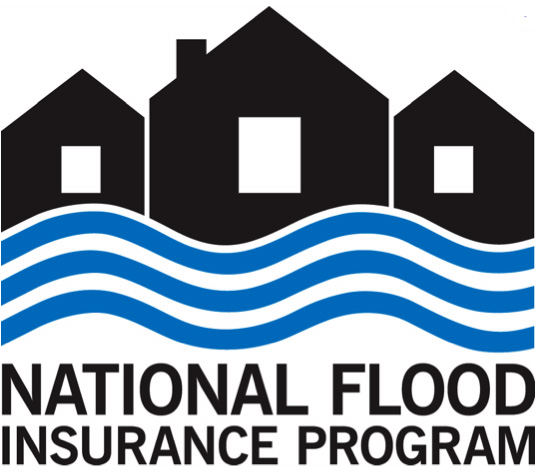A new law meant to stabilize the federal government's money-losing flood-insurance program is starting to send rates sky high, prompting a growing backlash in coastal areas.
The Biggert-Waters law, enacted in 2012 before superstorm Sandy hit the Eastern Seaboard, requires that government insurance premiums for the 5.6 million property owners in flood-prone regions be set at a level that better reflects the full risk of flooding. It was prompted by cumulative losses that have ballooned to $24 billion for the National Flood Insurance Program.
The changes mean some owners must retrofit their homes or businesses -- by raising buildings higher above the ground and taking other measures -- to better guard against flooding, or pay rates that could surge to $10,000 and higher a year.
Property owners along the Gulf Coast and Eastern Seaboard, used to annual premiums of about $1,000, are starting to feel the impact.
Vacation homes are subject to new insurance rates starting this year, while primary residences already subject to flood insurance will get new rates in phases.
The government also is redrawing flood-zone maps that will classify more properties as flood risks.
Bill Bubrig, a 47-year-old insurance agent in Plaquemines Parish, La., is at the leading edge of the sticker shock.
"This will be much worse than Hurricane Katrina as far as the devastation that it's going to cause the lower end of our parish," he said.
Mr. Bubrig estimated that flood-insurance premiums on his home will increase from $633 to $28,000 a year, with a big chunk of the increase hitting as early as 2014.
For Mr. Bubrig, who 15 years ago built his home two feet above the minimum elevation, part of the problem is a pending new flood map that says his home is actually six feet too low. The flood-insurance law compels him to undertake expensive improvements or pay higher premiums.
Because of the new law, a previously available exemption that applies to homes that were built to code also is no longer available. Mr. Bubrig said his home has never flooded.
To soften the impact, some members of Congress are asking the Federal Emergency Management Agency, which administers the federal flood insurance program, to delay implementing parts of the law while lawmakers consider changes to limit premium increases.
Louisiana's two senators, Mary Landrieu, a Democrat, and David Vitter, a Republican, in late July threatened to hold up the possible nomination of FEMA Administrator Craig Fugate as Department of Homeland Security secretary -- should the White House decide to nominate him for a post being vacated by Janet Napolitano -- unless FEMA makes changes to the insurance program.
"We both feel strongly that these challenges must be addressed in a very serious manner before he is promoted to any other position," the lawmakers said in a July 29 letter to President Barack Obama.
FEMA is an agency within DHS. The White House, through a spokesman, declined to comment.
The issue has transcended partisan lines, despite opposition from some conservatives who want to end federal flood insurance altogether. A third of the fiscally conservative Republican Study Committee joined Democrats in a June House vote to back the delay.
"You literally would be forcing those people out of their homes," said Rep. Steve Scalise (R., La.), the head of the RSC.
Two groups of property owners accustomed to government-subsidized insurance are feeling the effect the most: Those who own properties built before the release of the first federal flood maps, which outline flood zones, and owners of grandfathered properties that either met flood guidelines when they were built or have since been determined to lie in flood-prone areas.
Opting out isn't a choice for many, since flood insurance is mandatory for properties with federally insured mortgages. And there is little people can do to lower premiums shy of elevating properties, which likely would cost multiple tens of thousands of dollars.
A FEMA spokesman said the agency is simply focused on implementing the law, and said that while some rates may rise, others may fall. "FEMA is in the process of implementing the law as directed by Congress," FEMA spokesman Dan Watson said.
"In the long run, it will be important for the NFIP to ultimately implement these measures in order to achieve fiscal soundness and long-term stability," said Willem Rijksen, a spokesman for the American Insurance Association.
The new insurance rules are also playing out in areas hit by superstorm Sandy last fall.
The number of buildings in New York City's flood zone is expected to double, to about 67,700, based on flood maps that are under development using data compiled by the city and provided by FEMA.
Jake Beinecke, who bought a 19th century home in the Red Hook section of Brooklyn last year, shortly after the law was passed, is trying to figure out his options, none of which he said seem ideal.
Mr. Beinecke's home flooded during Sandy, causing nearly $90,000 of damage that was only partially covered by the flood-insurance program.
Since then, he and his partner have given up a below-grade ground floor, forcing them to stop renting an apartment unit they hoped would help cover a portion of the mortgage, and relocating the boiler and other utilities to a higher floor to limit damage from future floods.
But he said FEMA won't give him credit for all the changes, threatening to leave him with premiums he expects to run between $9,000 and $12,000 a year.
FEMA says that it does give credit for renovations to limit flood damage, but people are sometimes disappointed when the savings don't add up.
"The only solution I see is some sort of political conversation that needs to take place that hasn't taken place yet," said Mary Delaney Krugman, a historic-preservation specialist whose second home, a cottage in Ocean City, N.J., flooded during Sandy.













